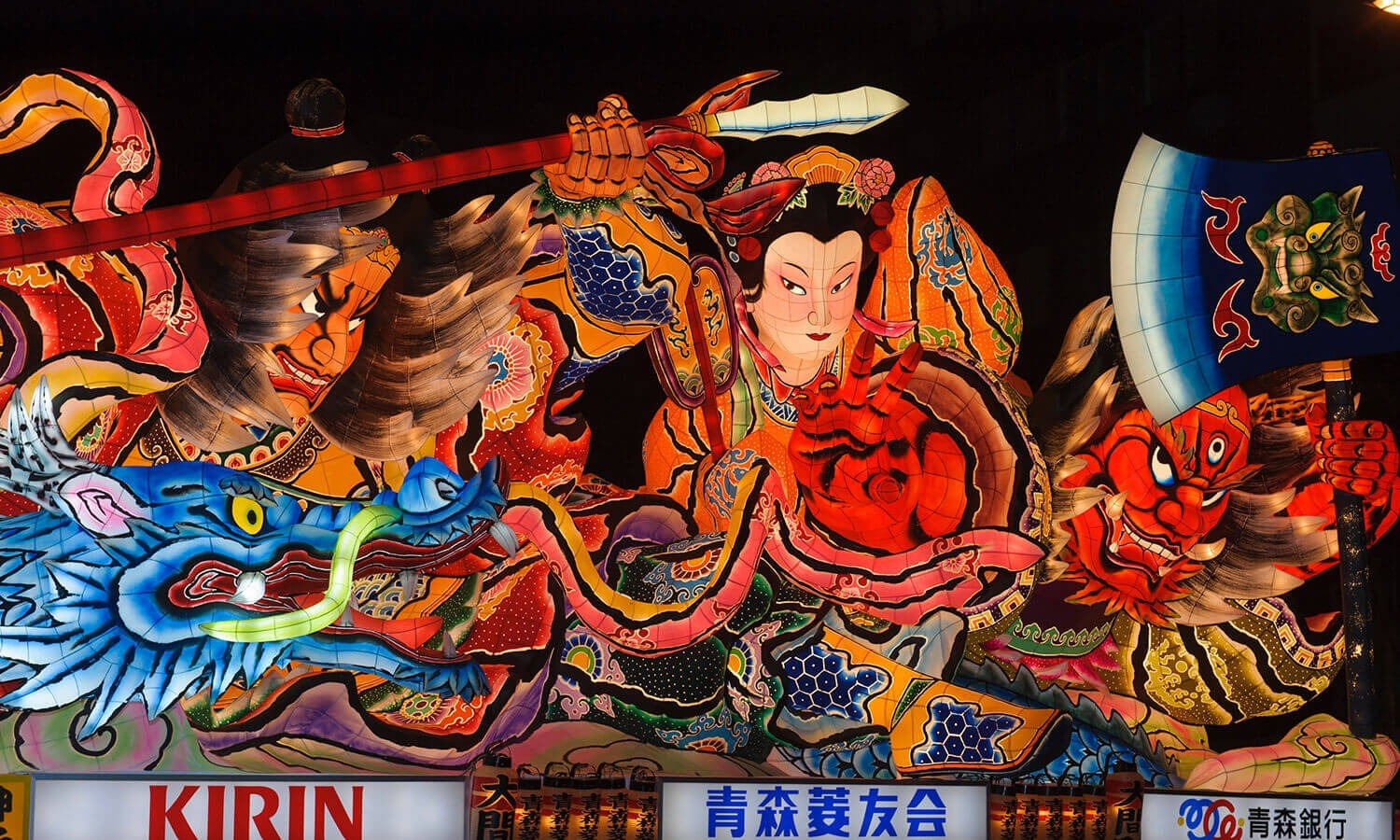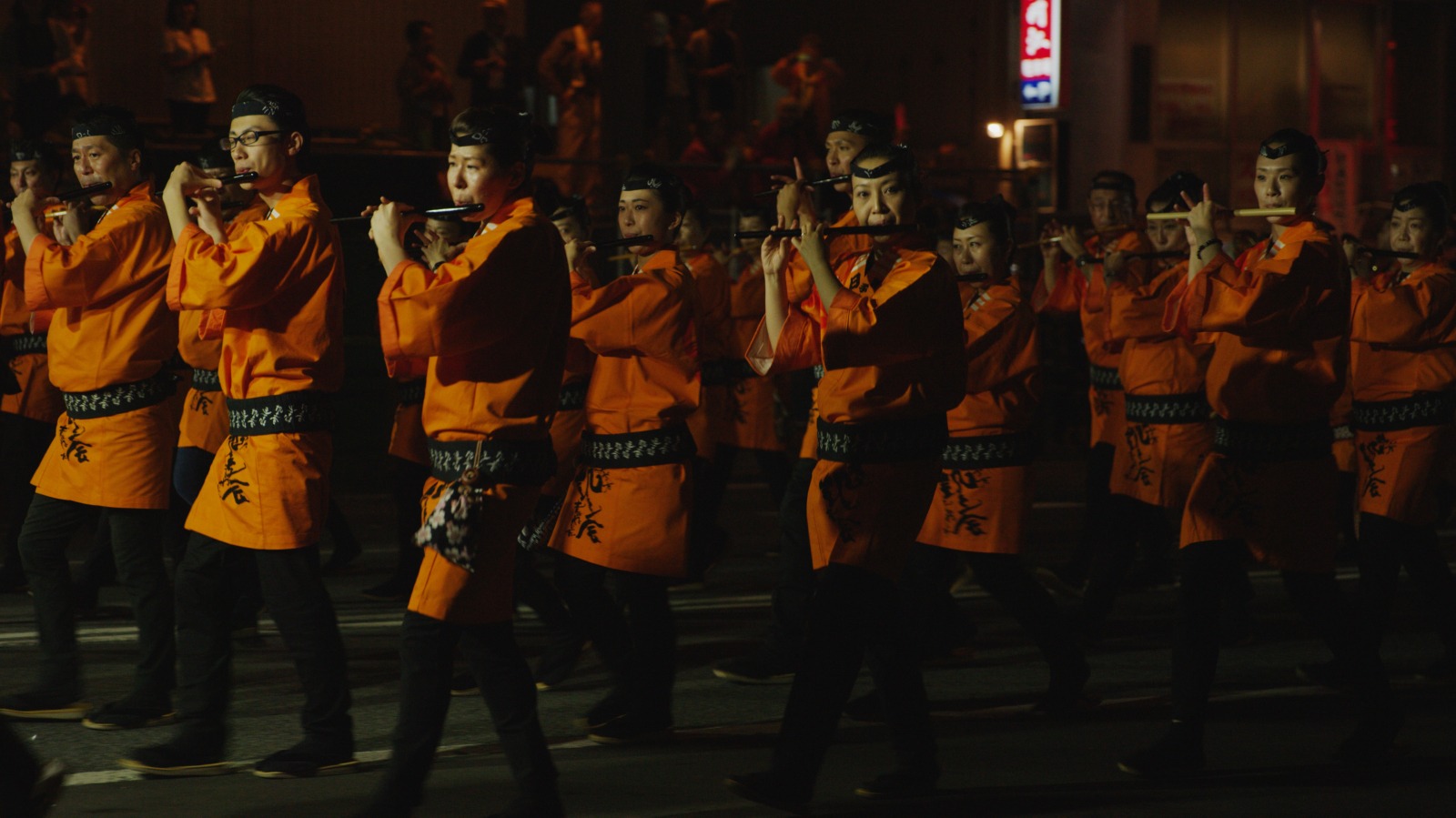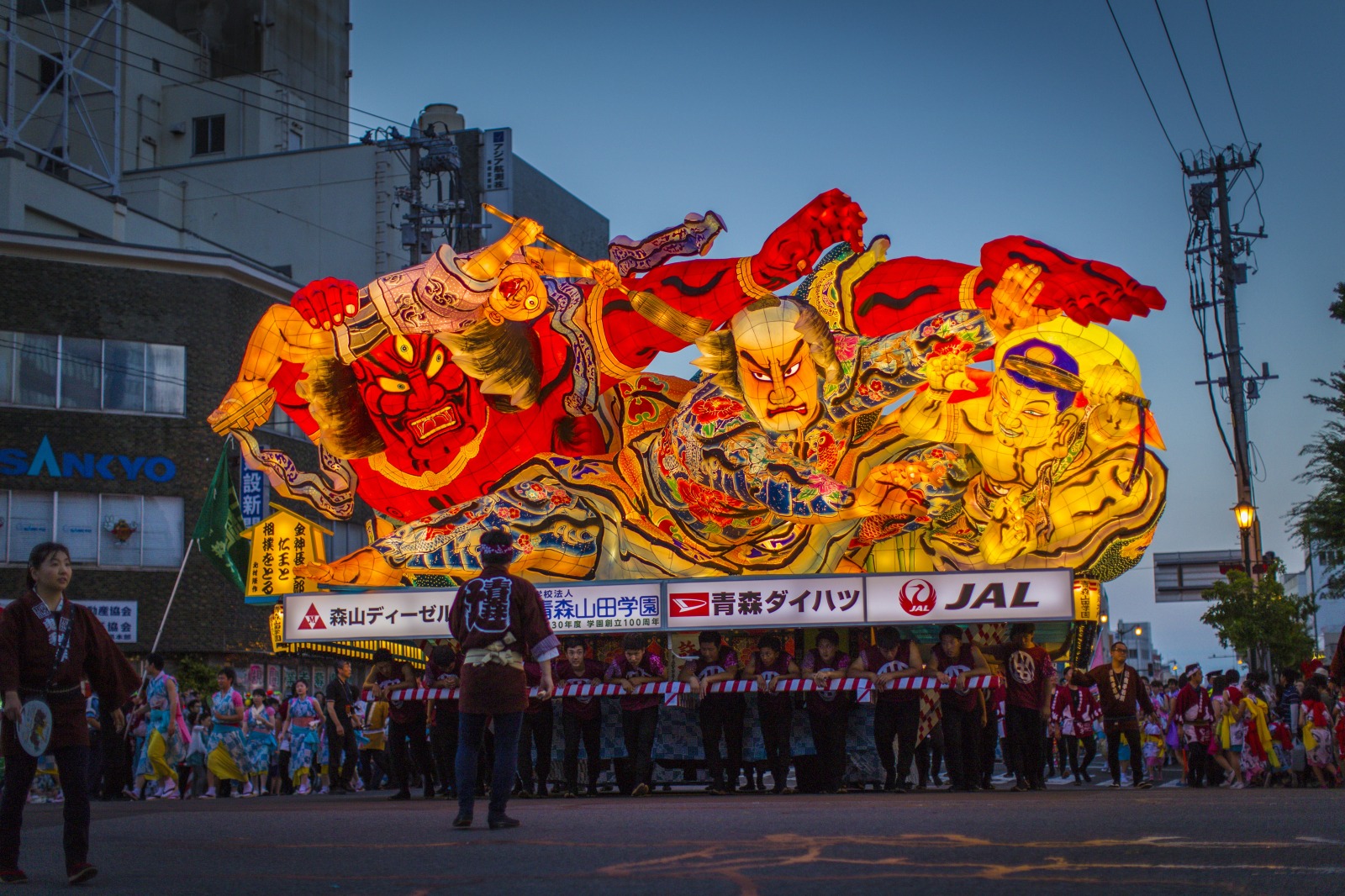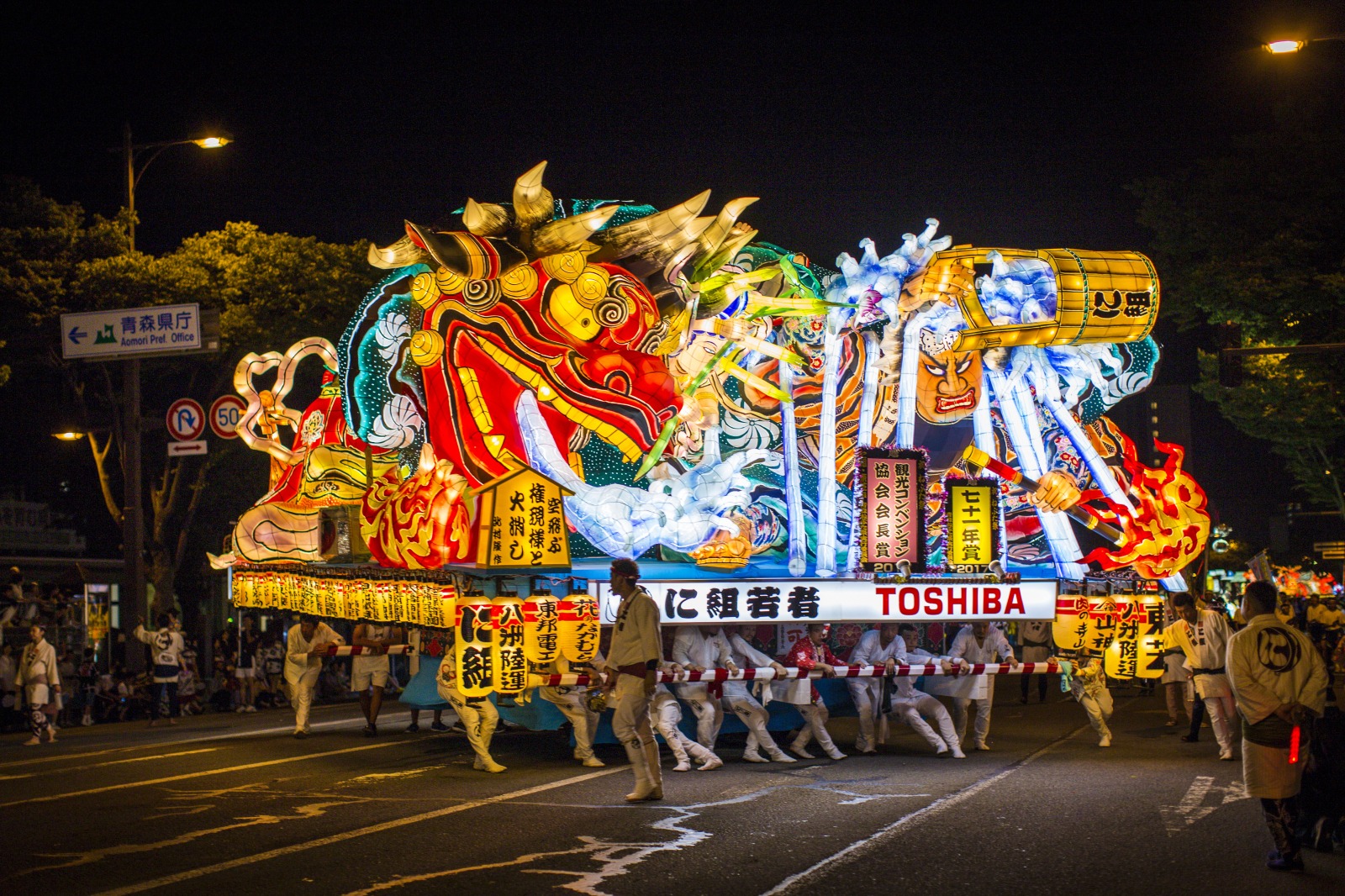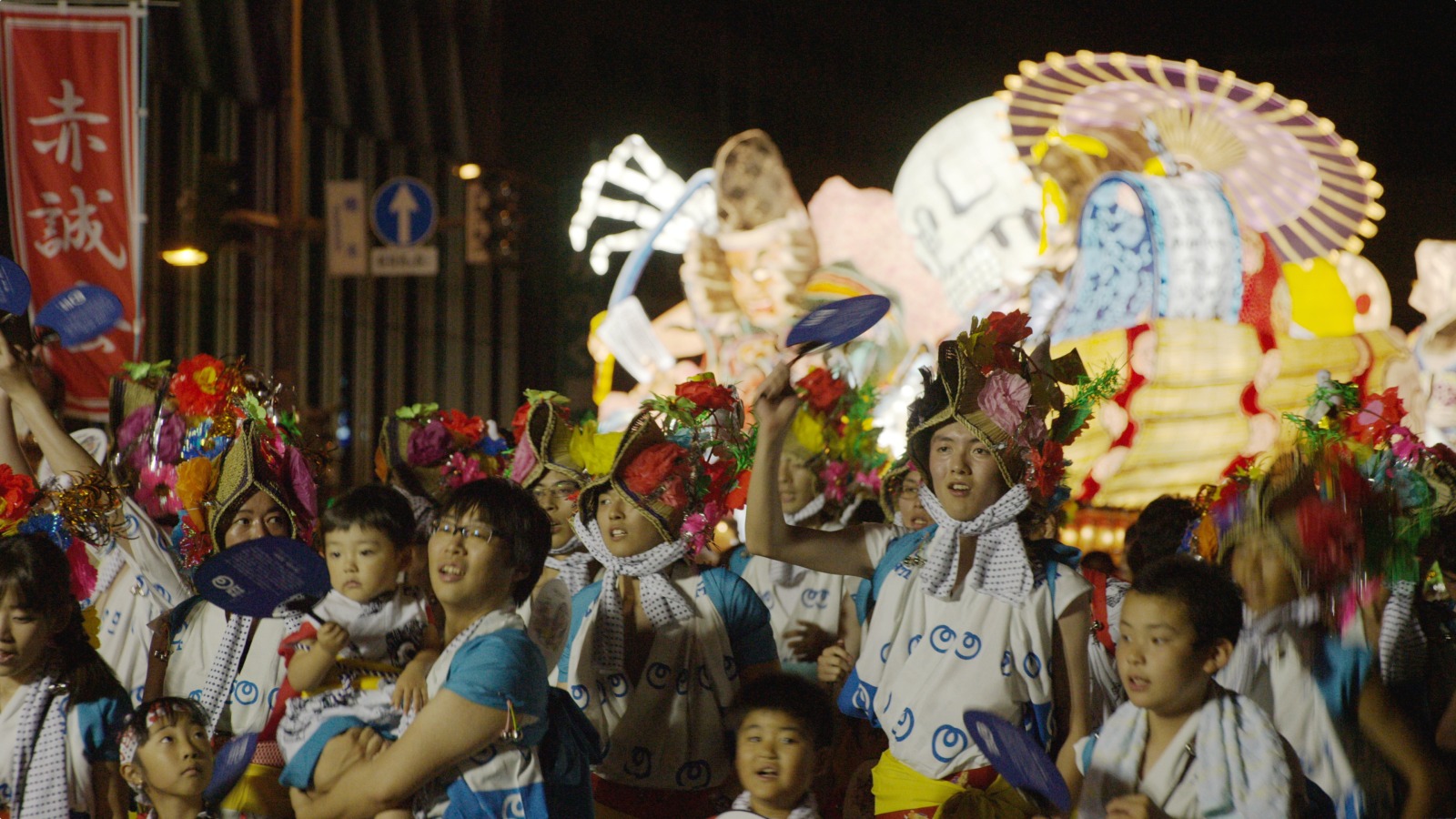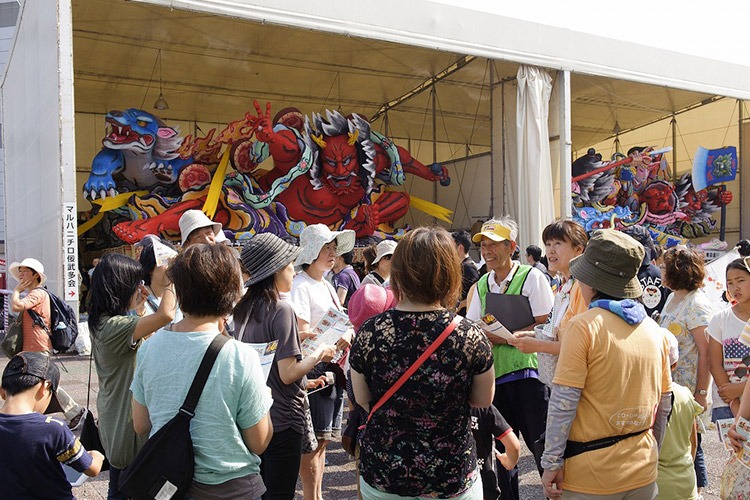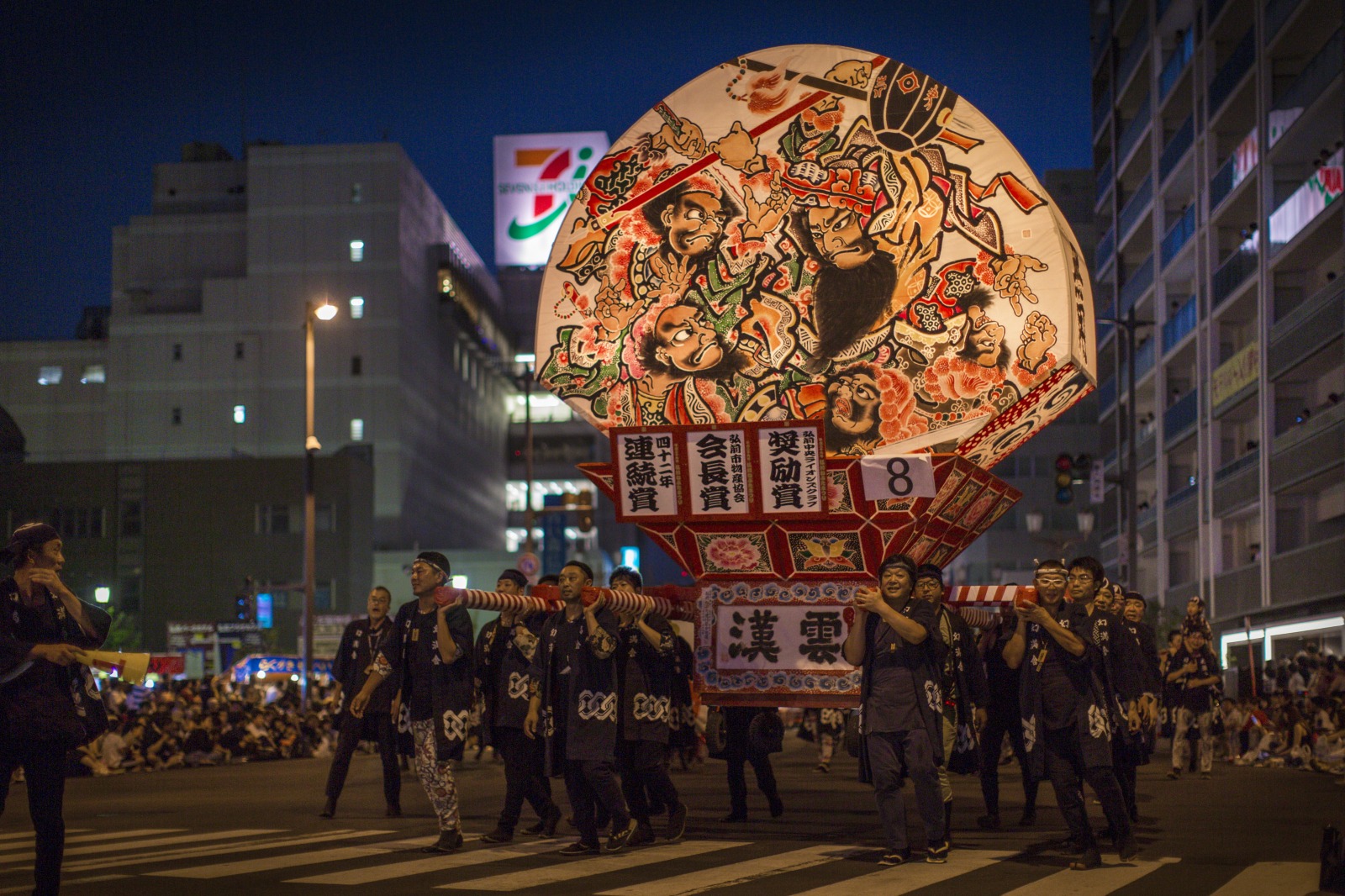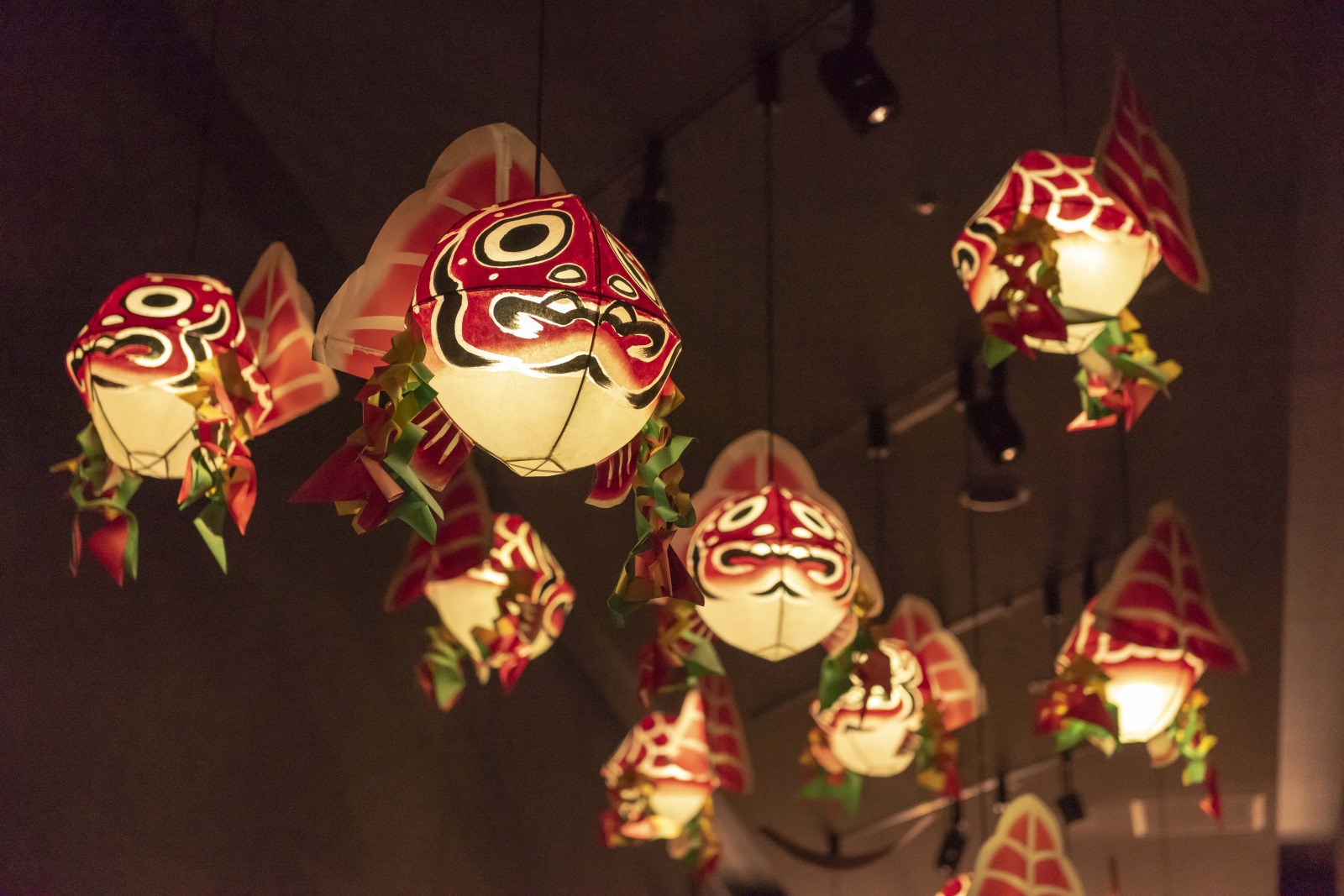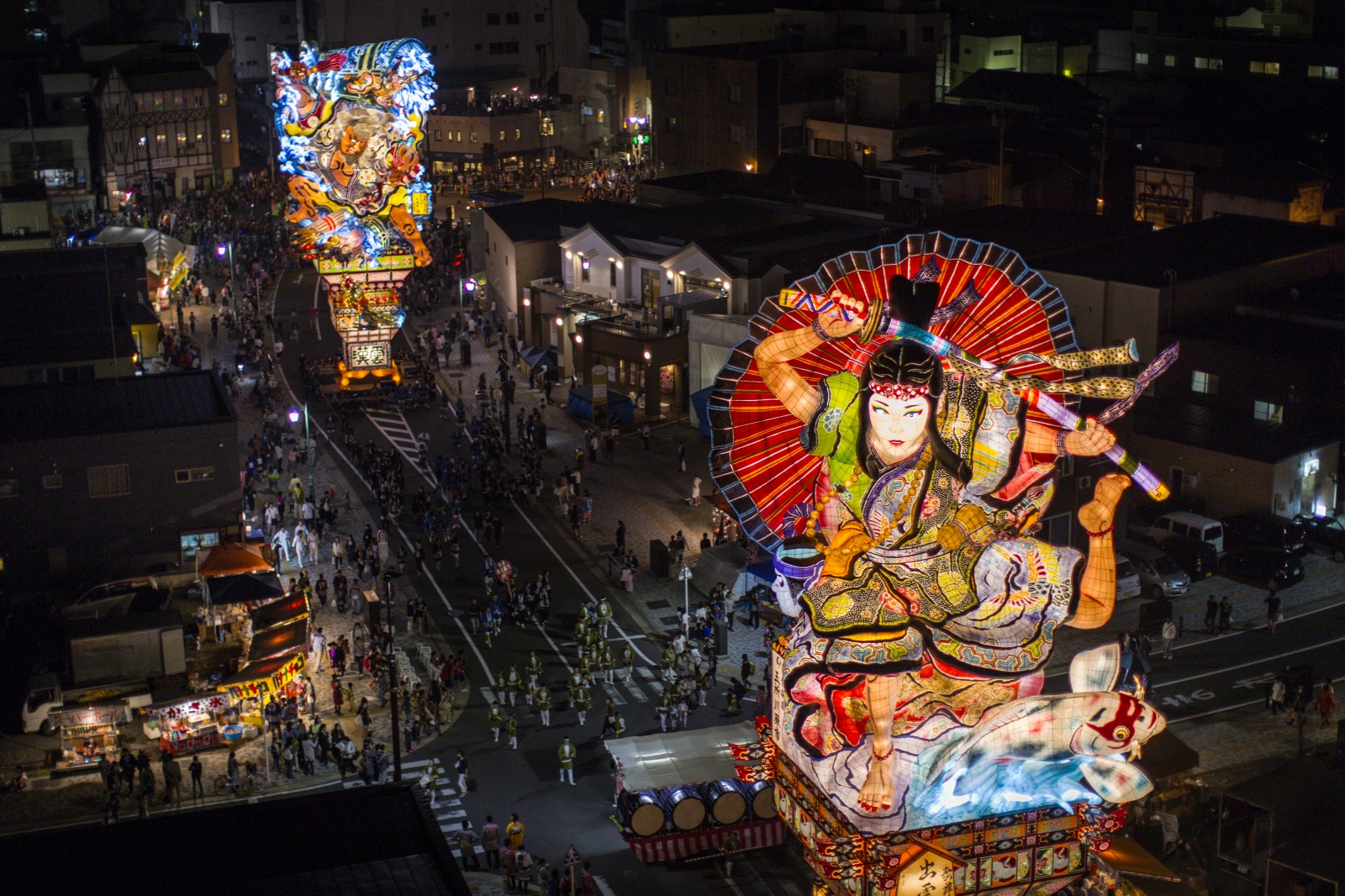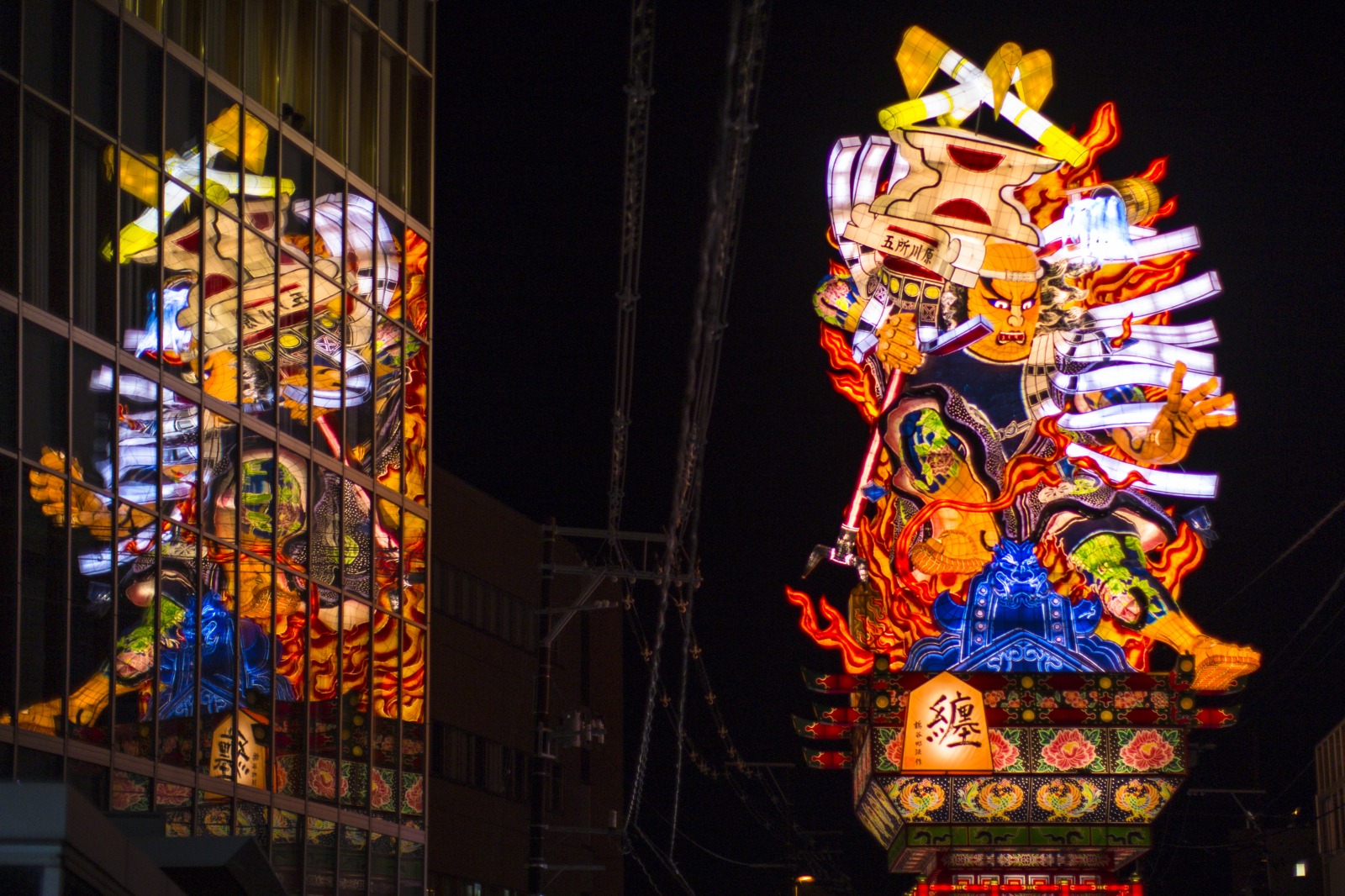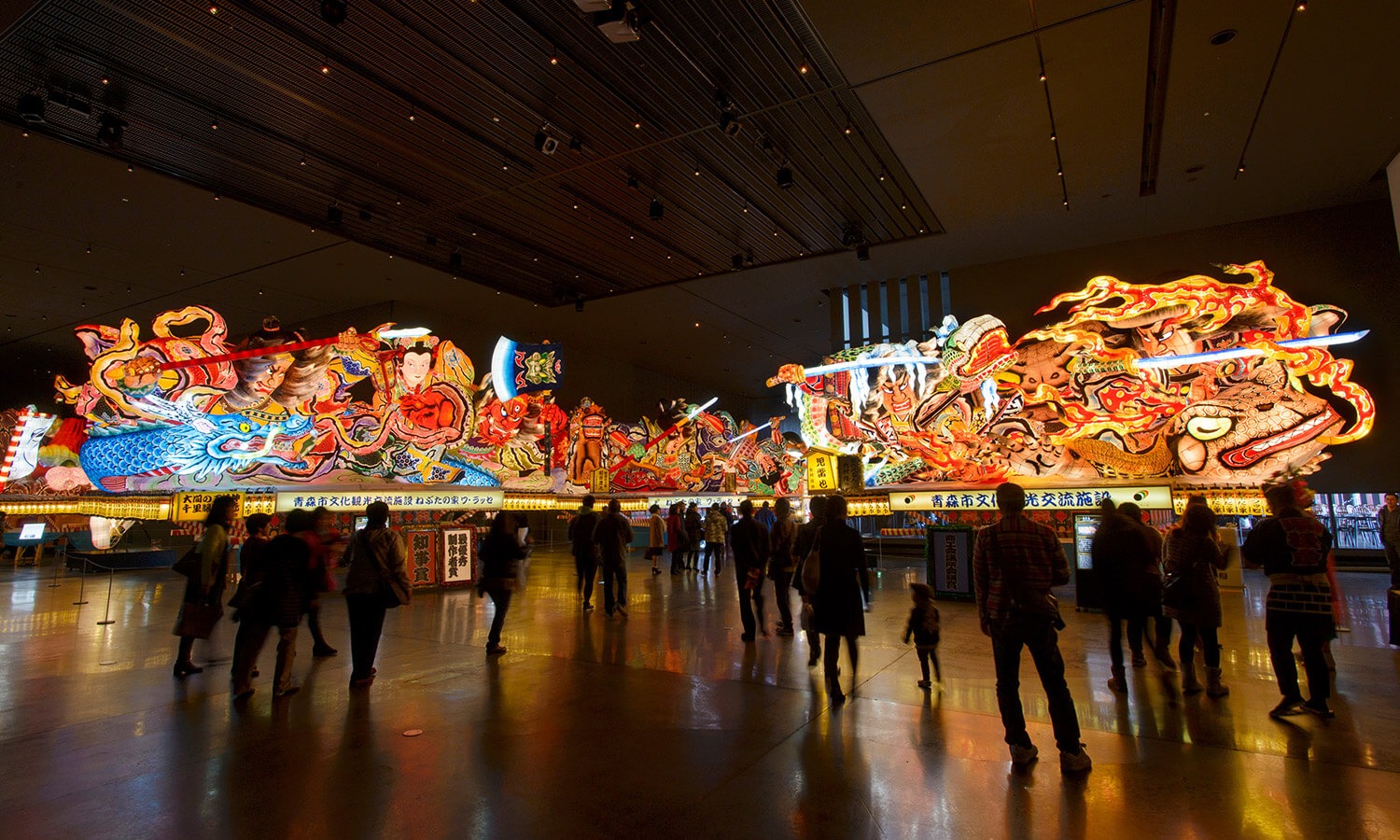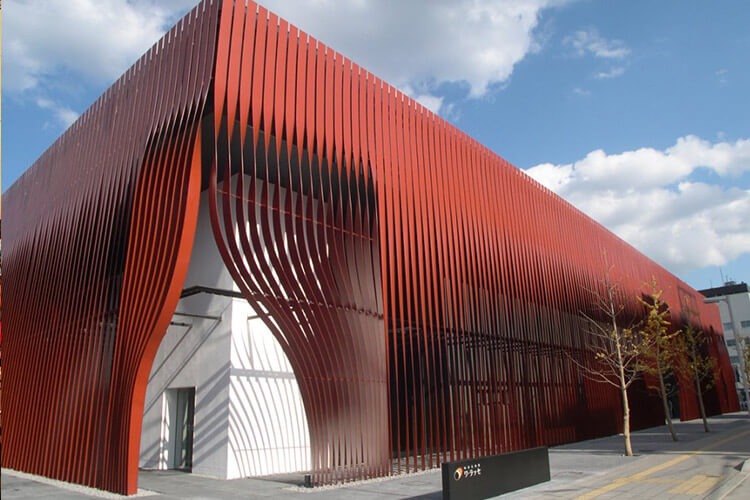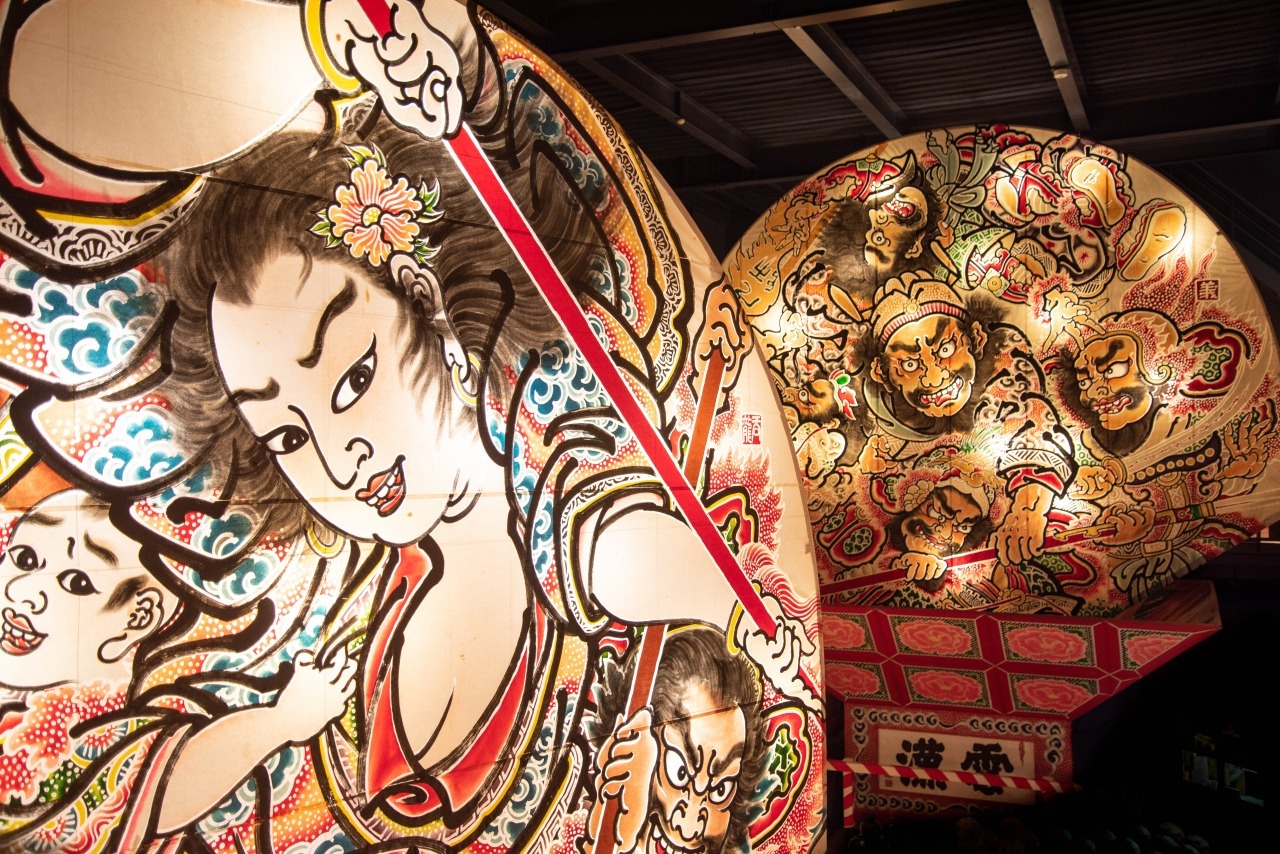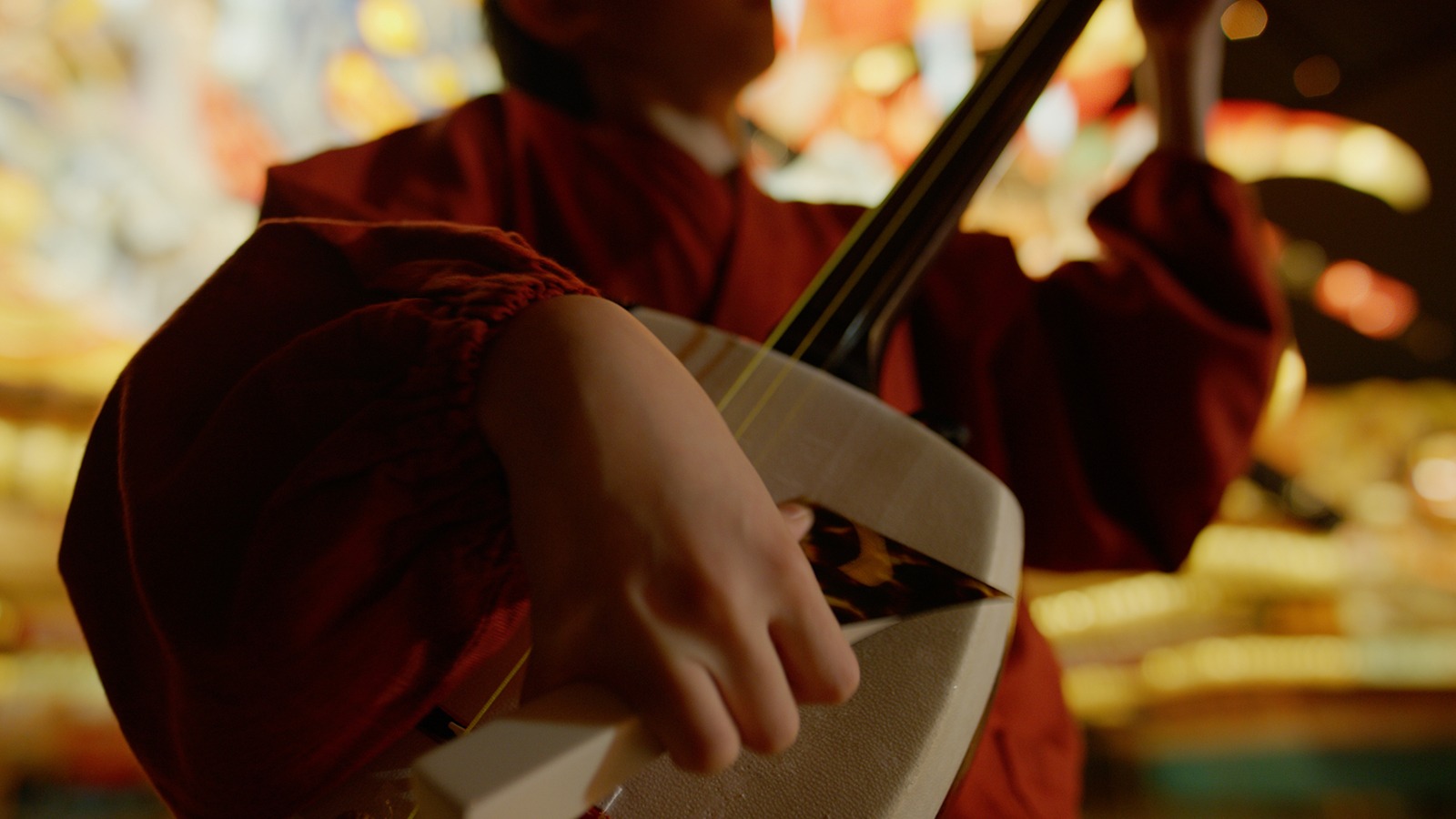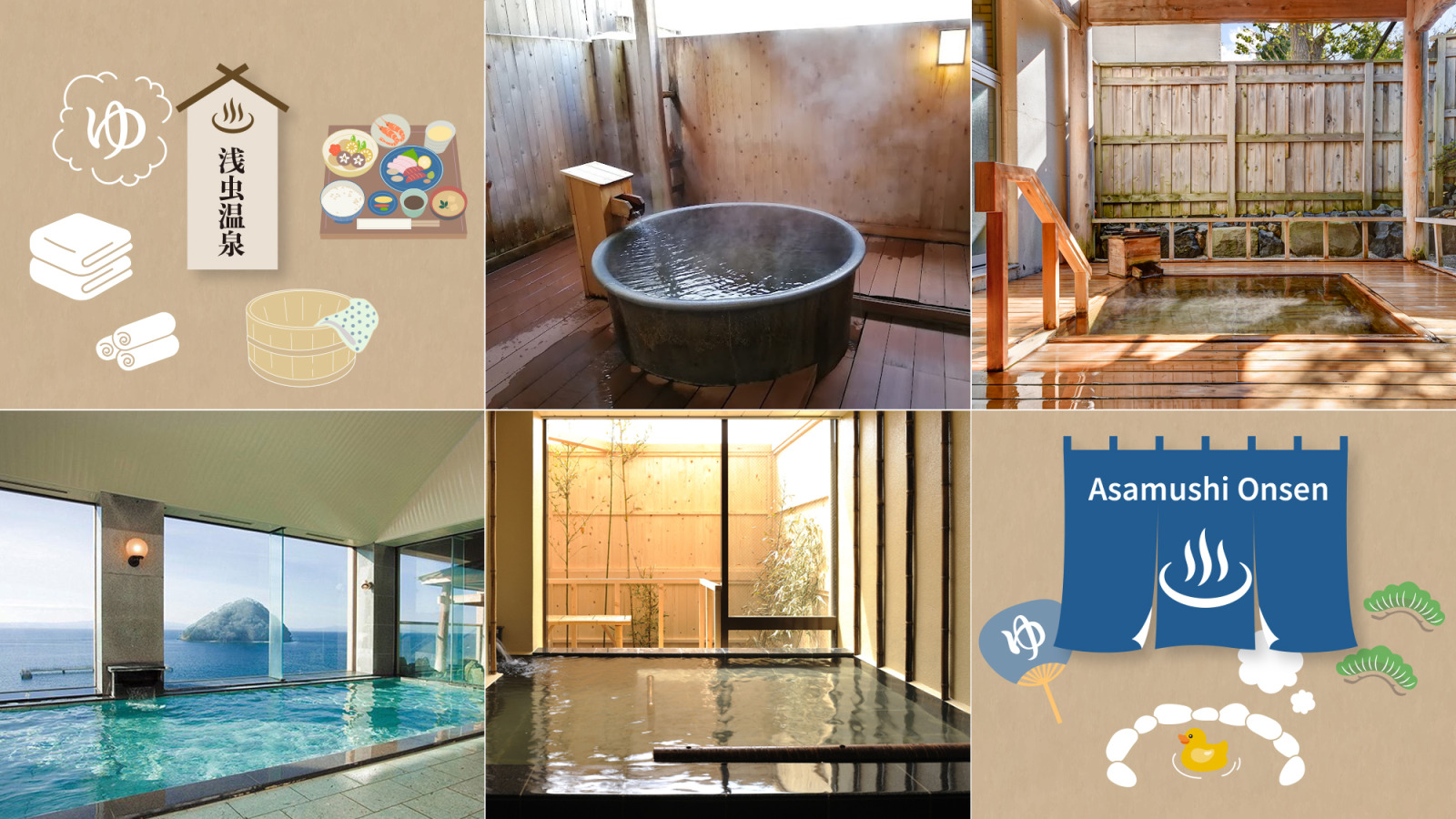Aomori’s Exciting Fire Festivals

Aomori Nebuta and Hirosaki Neputa festivals on the whole are quintessential Japanese summer events. With live music and energetic shouting, the bright-colored Nebuta floats parade through the streets as if floating along a river. It’s an awe-inspiring sight.
After surviving through the harsh winter, the people of Aomori devote their bottled-up passion to the short festival period during the summer. The people’s prayers and pride for their homeland is the source of Nebuta festivals across Aomori. As one of the representative fire festivals of Japan, people in Aomori unite their souls and devote themselves wholly to the festival.
There are several theories as to the origin of Nebuta, however, the most accepted theory says it derived from the floating lanterns that dot rivers during Tanabata festivals. In Tsugaru dialect, nemutai (sleepy) is said “neputee”, which is believed to have changed overtime to the currently known festival name, Nebuta/Neputa.
Aomori Nebuta Festival
The Aomori Nebuta Festival is a summer festival held annually from August 2nd to 7th in the city of Aomori. The energetic and intense festival welcomes over 3 million visitors every year from all over Japan and the world.
There are two types of nebuta (neputa) floats, a human-shaped nebuta and a fan-shaped neputa. The Aomori Nebuta is a human-shaped float. The largest nebuta, including the cart, is 9 meters (29 feet) in width, 7 meters (22 feet) in depth, and 5 meters (16 feet) in height. It weighs 4 tons (8818 lbs). Owing to the appeal and history of the event, in 1980, the Nebuta Festival was designated as one of the National Important Intangible Folk Culture Properties.
The nebuta float master draws the preliminary sketch and decides on the entire structure and colors. It takes about three months for a team of artists to give birth to a single nebuta float, beginning with making a wire base and applying washi (Japanese paper).
On the day of the festival, the haneto (nebuta dancers) dress in colorful costumes and begin their festival chants. Chants of “Rassera, Rassera” echo through the streets of Aomori. With musical performances by hayashi performers,, the festival begins to reach its peak. As the dance of haneto intensifies, the crowd cheer more loudly. On the night of the 7th, the nebuta are placed in boats and ferried around Aomori Bay while fireworks light up the night sky to conclude the festival.
Why don't you become a haneto dancer and join in?
Even visitors can participate in the festival as haneto dancers, to make the evening an unforgettable experience. Just dress in the haneto costume and introduce yourself to one of the nebuta groups before the start of the parade. Participants can enjoy the festival freely. There are also rental and dress-up services available.
Get a taste of craftsmanship before the magical night
Every year from May to the end of the Nebuta Festival, Rasse Land—the nebuta production and storage facility—is set up in a corner of Aoi-Umi Park. There are personal guides available from July to August 6th to show you around the nebuta floats.
Hirosaki Neputa Festival
The Hirosaki Neputa Festival is held every August, from the 1st to the 7th. About 80 neputa floats of various sizes—large fan-shaped floats depicting epic and fantastic images of warriors—parade through the city. This parade of lights boasts the largest number of floats among all nebuta/neputa festivals. In 1980, Hirosaki Neputa Festival was designated as one of the Important Intangible Folk Cultural Properties of Japan.
The key feature of a neputa is the contrast between the gallant kagamie (front picture) and the elegant miokuri (back picture); these are characterized by a contrast of stillness and motion. Typically, neighborhood associations and citizen groups gather together to make and carry one float. The group then parades through the city accompanied by children shouting “Yah ya do!” while flute and taiko drum players perform alongside them. The children carry kingyo neputa (goldfish neputa), a float shaped like a goldfish breed known as Tsugaru Nishiki (an ornamental fish bred since feudal times). Kingyo neputa are quite popular for their adorable shape.
Goshogawara Tachineputa
Among all of the nebuta festivals in Aomori Prefecture, the one with the greatest scale is the Goshogawara Tachineputa. These23-meter (75 feet) tall floats—equivalent to a seven-story building—parade through the city of Goshogawara every year from August 4th to 8th.
Once upon a time, successful merchants of old competed against each other to construct the highest neputa as a symbol of their strength. The great neputa were lost for a long time but the festival practice was revived in 1993 when lost schematics and pictures were discovered. A group of volunteer citizens brought it back to the public after the festival had disappeared for more than 80 years. The massive floats and the energetic shouting of “Yattemare!” never fail to captivate the audience.
Enjoy the Nebuta Festival Year Around
The Nebuta House Wa Rasse of Aomori City, the Tsugaru-han Neputa Mura of Hirosaki City, and the Tachineputa no Yakata (Tachineputa Museum) of Goshogawara City each exhibit nebuta/neputa floats permanently for tourists to enjoy the enchantment of nebuta even during non-festival times.
